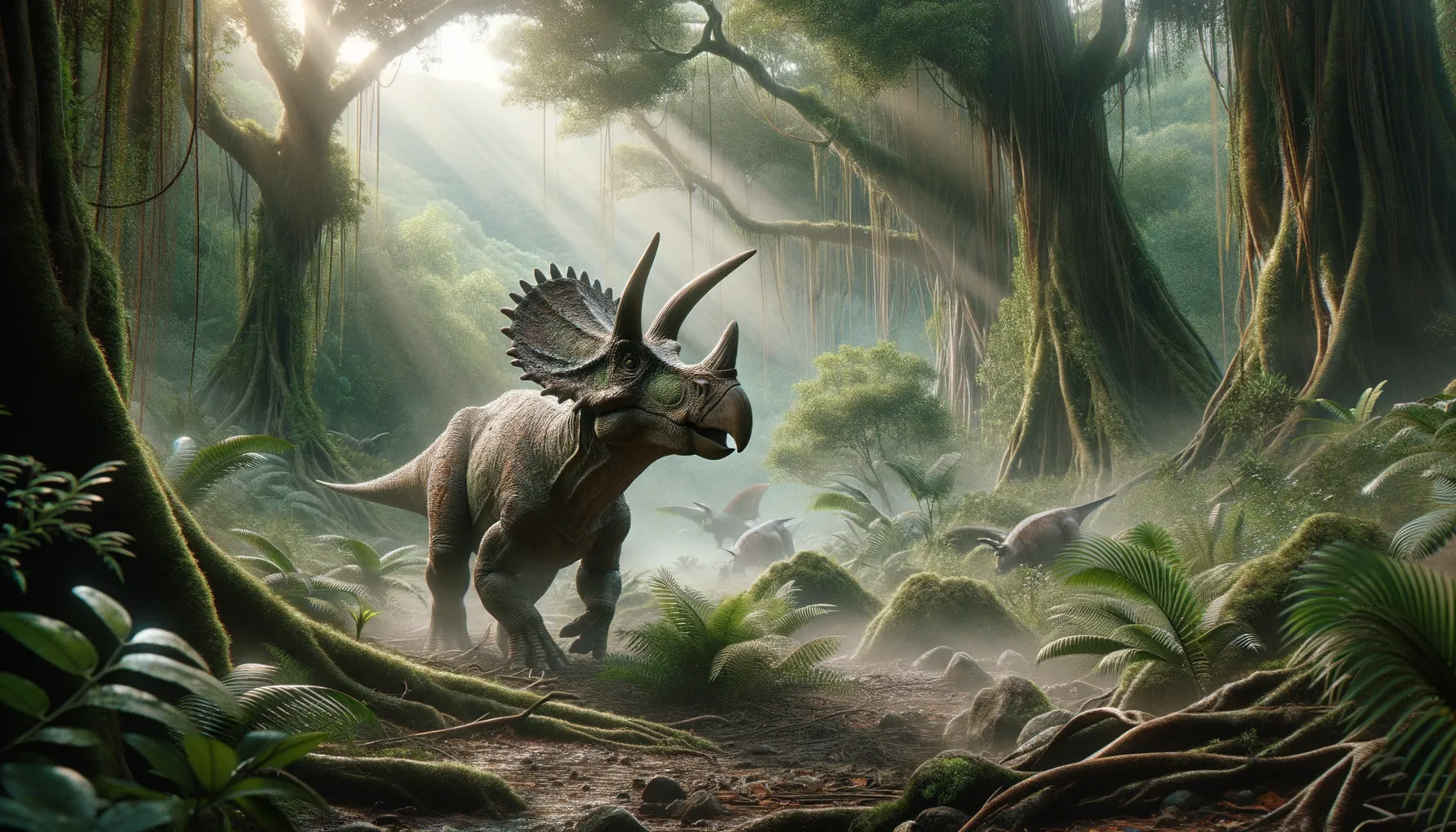
Graciliceratops
Small horns, big story.
Period
triassic
Length
Roughly 1.5 meters (5 feet) in length.
Height
Around 0.6 meters (2 feet) tall.
Weight
Approximately 30 kilograms (66 pounds).
Graciliceratops was a small, plant-eating dinosaur from the late Cretaceous period. It belonged to the ceratopsian family, known for their beaked mouths and frilled skulls. While not as large or as heavily adorned as its more famous relatives like Triceratops, Graciliceratops was well adapted to its environment. Its relatively light build and small size suggest it could move through dense vegetation effectively while foraging for food.
Diet
Graciliceratops was herbivorous, feeding primarily on low-lying plants. Its beaked mouth was well-suited for clipping leaves and stems, allowing it to thrive in the lush Cretaceous landscape. This adaptable diet helped it survive the varied ecosystems it inhabited.
Hunting
Graciliceratops did not hunt as it was a herbivore. Instead, it spent considerable time foraging for plants, using its beak to efficiently harvest food. This behavior required consistently staying alert for predators.
Environmental challenges
Living in the diverse environments of the late Cretaceous, Graciliceratops needed to adapt to changing plant availability and avoid predation from larger carnivorous dinosaurs. Seasonal changes would have posed a significant challenge, necessitating efficient foraging strategies. Additionally, competition with other herbivores likely influenced its feeding habits and habitat preferences.
Speed
Likely slow-moving due to its size and build.
Lifespan
Estimated to be around 10 to 20 years.
First discovery
Discovered in Mongolia by Polish-Mongolian expeditions in the 1970s.
Fun Facts
- Graciliceratops was a small dinosaur that lived during the Late Cretaceous period, about 85 million years ago.
- Its name means 'graceful horned face' due to its light build and small horns.
- Graciliceratops was related to the more famous Triceratops, but was much smaller, about the size of a sheep.
- This dinosaur had a beak-like mouth, suggesting it might have fed on plants like ferns and leaves.
- Fossils of Graciliceratops have mostly been found in Mongolia, giving scientists clues about its habitat.
- Graciliceratops was a ceratopsian, a group known for their frilled and horned faces, though its frill was quite modest.
- Despite its small size, Graciliceratops had sturdy limbs, which might have helped it move quickly to escape predators.
Growth and Development
Like many ceratopsians, Graciliceratops experienced rapid growth during early life stages, reaching near-full size well before adulthood. Its development involved strengthening its beak and skull frill, important for feeding and social interactions. Juveniles were likely more vulnerable to predation, requiring group protection.
Habitat
Graciliceratops inhabited semi-arid regions with seasonal plant availability, suggesting it lived in areas with dry and wet periods. Its environment consisted of forested terrain interspersed with open areas, providing diverse dietary options. These regions supported a variety of other dinosaur species, indicating a rich and competitive ecosystem.
Interaction with other species
Graciliceratops coexisted with various other dinosaur species, including larger herbivores and predators. Its presence in mixed herds would have provided safety in numbers, helping deter potential threats. Interaction with other herbivores possibly included competition for food and social behaviors like nesting and foraging in groups.
Natural lifespan
Graciliceratops likely had a natural lifespan of about 10 to 20 years in the wild.
Reproduction
Graciliceratops likely reproduced by laying eggs in small nests, typical of ceratopsians. Nurturing behaviors may have included guarding the nest and possibly communal nesting practices for mutual protection. Hatchlings were precocial, meaning they were relatively mature and mobile shortly after hatching.
Social behaviour
Graciliceratops was likely social, living in herds for protection and cooperative foraging. Social structures may have involved complex interactions such as grooming, communicating via vocalizations, and using body language. Such behaviors helped maintain group cohesion and deter predators.
Fossil locations
Fossils of Graciliceratops have been found primarily in Mongolia, providing insights into its habitat and lifestyle. These discoveries are crucial in understanding ceratopsian diversity and distribution during the late Cretaceous. The paleontological record shows its existence was geographically limited to a specific region in Asia.
